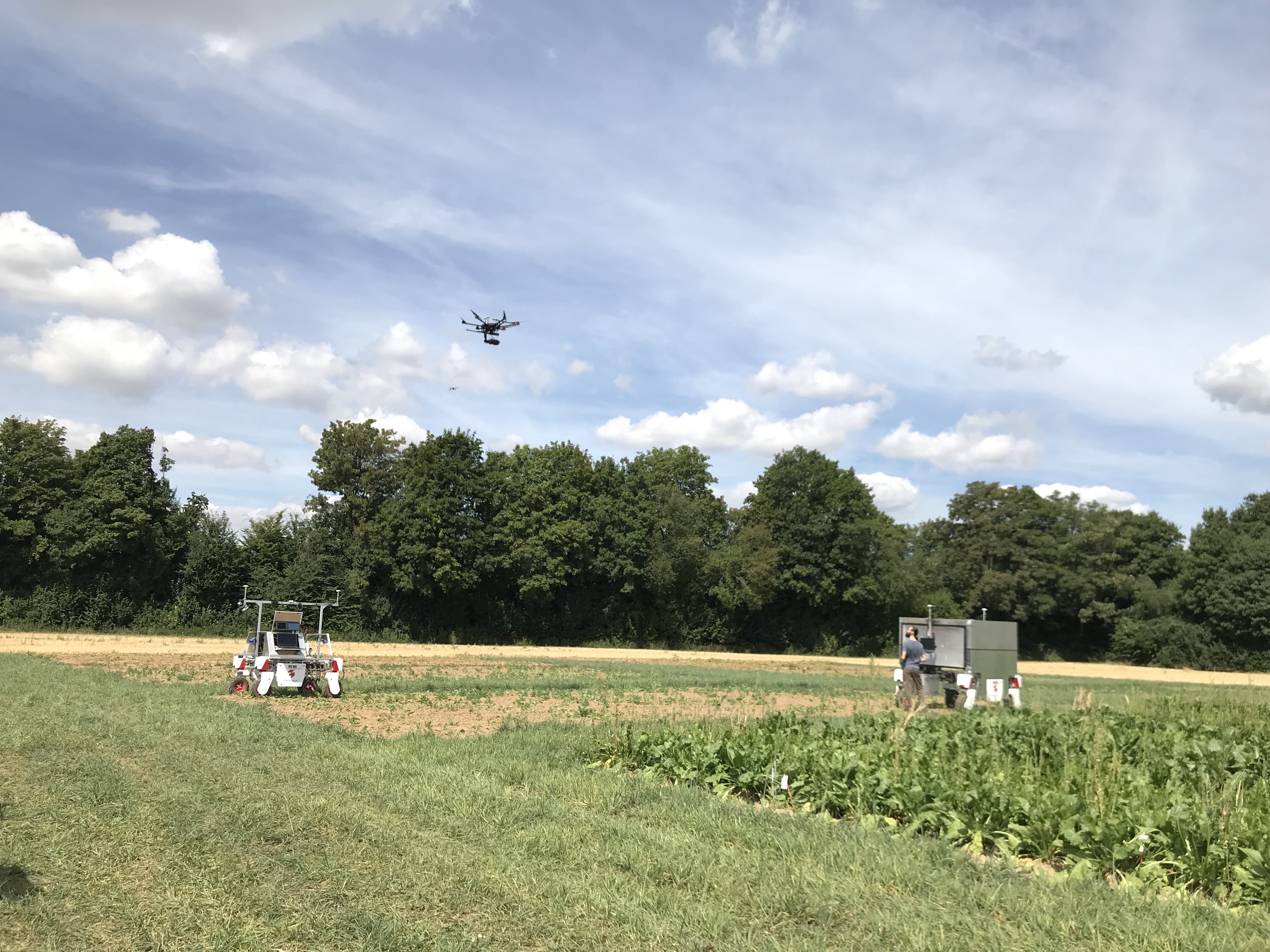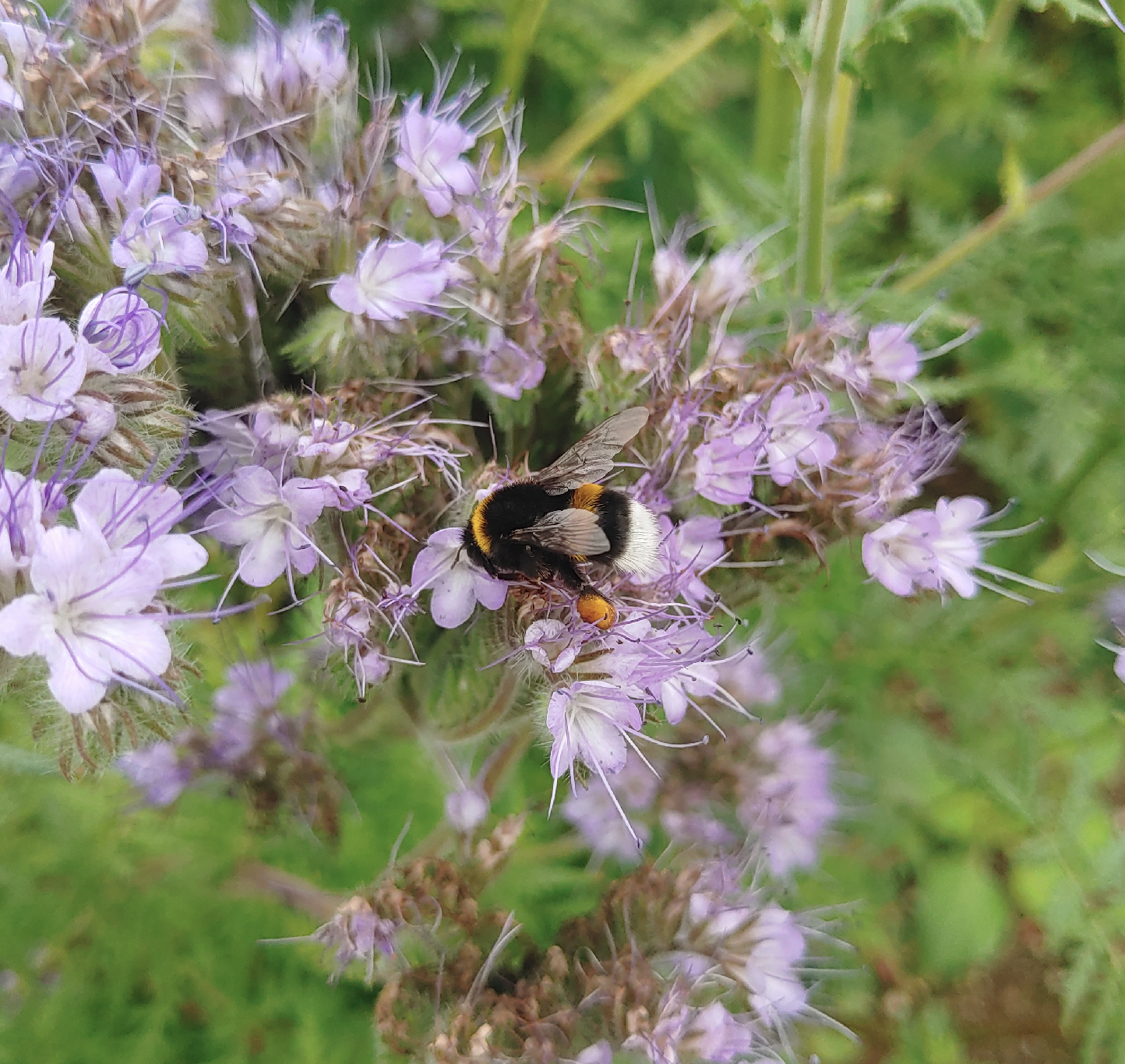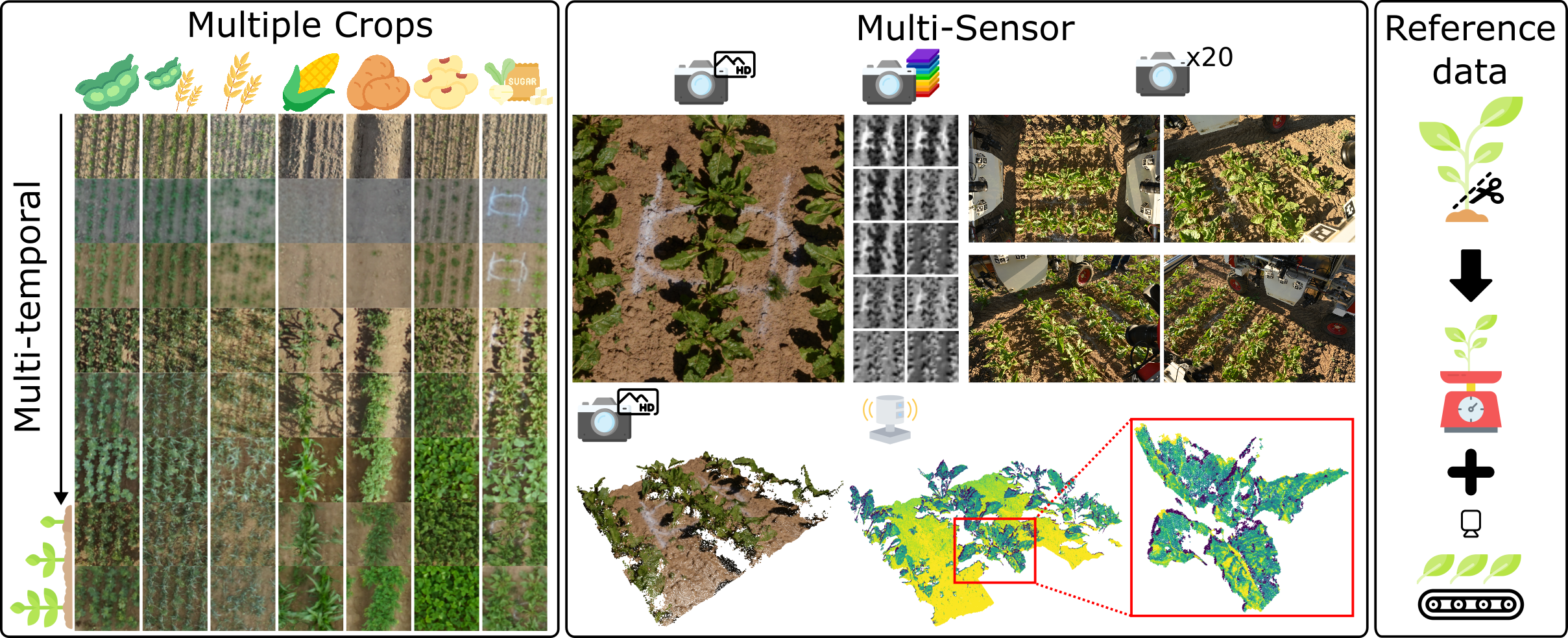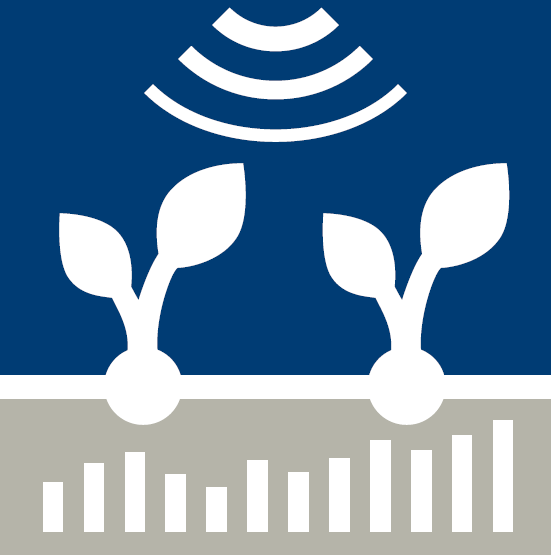Linn Chong
Type of resources
Keywords
Contact for the resource
Provided by
-

-

Same field, different sensors and robots.
-
UAV RGB images captured using PhaseOne. Also included, the process orthophotos and camera extrinsics. Data collected in 2023 at the PhenoRob Central Experiments in CKA.
-

RGB images containing honey bees and bumble bees (with stationary nadir view) collected in cultivars: (i) phaceliia, (ii) phacellia-maize intercropping (iii) flower mix (iv) flower mix - maize intercropping. and also images taken using smartphone with honey bees and bumble bees in focus. We manually annotated RGB images with bounding boxes. each bounding box categorises the bee as a honey bee or a bumble bee or an unknown bee. Unknown bees are bees which could be a bumble bee or a honey bee, but based on the image, we could not tell exactly which category it actually belongs to. Flies that look similar to bees are also labelled as unknown bees. We saved the labels are in the YOLO format.
-

Phenotyping is crucial for understanding crop trait variation and advancing research, but is currently limited by expensive, labor-intensive monitoring. New methods are proposed to automate phenotypic trait monitoring and reduce this so-called phenotyping bottleneck. These methods are often data-driven, requiring a dataset for novel method development. In this paper, we present the MuST-C (Multi-Sensor, multi-Temporal, multiple Crops) data set, which contains field data from various platforms collected over one growing season, covering six different crop species. All data are georeferenced for alignment across sensors and dates. To collect our dataset, we deployed aerial and ground robotic platforms equipped with RGB cameras, LiDARs, and multispectral cameras to achieve not only a high variety of modalities but also varying viewpoints. In addition to sensor data, our data set provides destructively derived reference measurements of leaf area and biomass. Our data set enables the development of autonomous phenotypic trait estimation techniques, including novel multi-sensor approaches. Moreover, it allows method comparisons using different sensors and investigates their generalizability across crop species.
 PhenoRoam
PhenoRoam